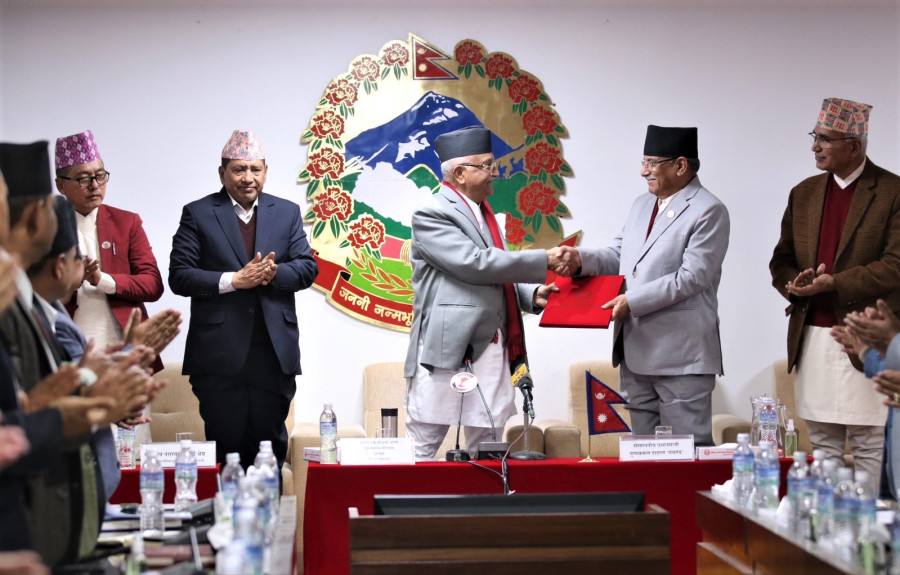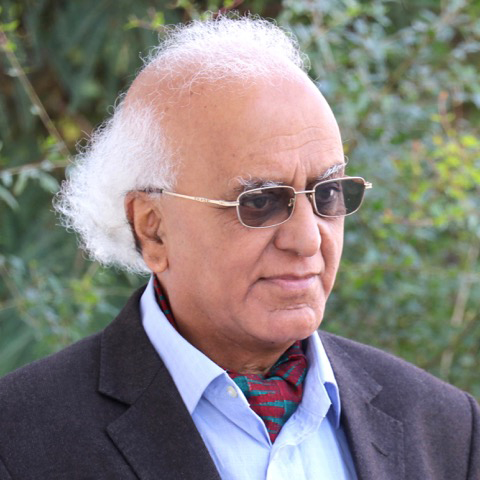Columns
Is Nepali politics postmodernist?
Nepali politics appears to be moving towards some kind of uncertainty.
Abhi Subedi
The fluidity we have noticed in Nepali politics today may give the impression of a postmodern condition. Postmodernism has developed a special semantic and philosophical shape in Nepali parlance known famously as uttaradhunik. This topic is debated more among literary writers than politicians. However, I have heard a few theorists half-heartedly use this in Nepali political conversations as well. An economist and leftist political thinker Hari Roka used to organise meaningful discussions known as mimamsa at the Nepal Academy hall some years ago. He would invite people holding different views to participate in the minuscule but rare colloquiums. On one occasion, I had conversations with some politicians about Nepali political postmodernism if any. Other than such scanty usages I know, Nepali politicians do not discuss the postmodern condition in Nepali politics. Mimamsas such as those are few and far between.
But literary writers have continued to use this term more than others. They are divided into two camps. One camp holds that postmodernism is a bourgeois and capitalist theoretical creation. But there are others who consider postmodernism as a very progressive concept. Their argument is that postmodernism opens plurality in literary discussions. The fixity of meaning is an illusion. We discuss topics related to postmodernism with students in the English Department. I think this should also have happened in political science and other departments. I do not want to enter into a debate in this short column. But one thing should be mentioned about the appeal of postmodernism to both literary writers and political activists. Debates about postmodernism in these areas are held productively among rebellious social groups and Marxists as well as those who believe in the instability of meaning and multiple experiments in literature and art.
Convergence of subjects
There are, however, fewer instances of any serious literatist or culturalist venturing into discussions about bringing about convergence of literary and political subjects. In this context, I want to mention the efforts of one very important literary Nepali writer who used postmodernism as a productive mode in the interpretation of both politics and literature. It was critic and poet Jagadish Shumsher Rana who tried to find a common idiom for politics and literature in postmodernist discourses. I have some very strong recollections about my association and interactions with him. I should especially mention one event and a book about postmodernism that he wrote. Rana had invited me to “speak” at the launch of his book Uttaradhunikbad Bahulya Bisfot, or Postmodernism: An Explosion of Pluralism, on February 16, 2013. In this book published by Ranga Nepal, Rana has made some very bold and thought-provoking observations that strike me after a decade as worth repeating, especially in the present context of Nepali debate in the realm of theoretical interpretations of political karmas and thinking patterns. Rana and I were the only two on the dais, speaking about the book and its content.
What struck me was the audience composition for the postmodernist debate that foregrounded political ideas, including appreciation of the Maoists in some areas of Nepali politics. But the curious matter was Rana’s emphasis on the importance of postmodernism in that context. The audience was a mix of members of Rana’s family circle, who spoke by using high honorifics and saluted family seniors by covering their noses with the cupped palm. But there were also Maoists, leftists in general and some anarchist youths. That strange mix, that postmodernist composition of the audience, reflected the persona and vision of Jagadish Shumsher Rana. His ideas in the book indicate the need to re-evaluate the history of Nepal and redefine certain fundamentalist concepts.
Rana clearly admires the Maoists and the changes they introduced in society. But these ideas are controversial. Jagadish Rana shows that the mix of ideas and the conglomeration of different groups of people mark a shift in social and political studies. He writes that Nepali history follows a certain pattern that should be assessed openly. About the genesis of Ranacracy and modern Nepali history, Rana makes the following assessment, which I translate here: “The people who felt exhausted by the continuous fighting, pushing and pulling by the power elite at Nasal Chok (Hanuman Dhoka) had no option but to accept the autocratic family rule. That period was dominated by autocracy and feudalism. The question comes, what direction and course of support will the people take in today’s time of postmodernist plural explosion if people get exhausted in the same way?” (296).
The analogy that Rana draws between the state of the “exhausted” people of feudal times with the possible state of exasperation among the people if similar conditions as those experienced by the “exhausted” people occur in postmodernist times today is worth evoking here. The present state of Nepali politics is moving towards some kind of uncertainty. An erstwhile republican Maoist leader is the prime minister who is facing government partners from the monarchist stream of politics. This is, however, the result of democratic election practices as given by the republican constitution. The people have elected people from different age groups and social classes. People are openly discussing political, economic, diplomatic and ethical subjects. The judiciary has not been functioning in a properly organised manner as legal experts have been saying. Politics and governance, while compromising with the forces that have established themselves in different areas, including economics, trade and commerce, have to shun some of their established ruling practices. I see an alarming situation in the field of education management. A little mistake at this stage when political parties are uncannily focusing on sharing or grabbing power will destroy the education system. That will create a terrible situation.
Explosion of pluralities
The political parties who still evoke theories as their guiding principles know they cannot entirely live up to them. Creative persons holding posts in old municipalities more than others realise that they have to carefully combine their radical ideas with those who function with deep-rooted practices. The most visible clashes appear to be occurring in the architectonic areas, in the acts of demolition, reconstruction and preservation.
Postmodernism, as scholars have been saying, is a condition that calls for a change of the monolithic order into that of pluralities. In Nepal, the current political state indicates what Jagadish Rana calls an explosion of pluralities. The lure of an all-encompassing theory or some traditional institutions has to pass the test of time. I believe that the current state of plurality in politics and the great opening of the convergences of ideas is a great strength of Nepali politics. It calls for honesty, sincerity and openness to the culture of plurality and democratic commitments.




 12.12°C Kathmandu
12.12°C Kathmandu













%20(1).jpg&w=300&height=200)

